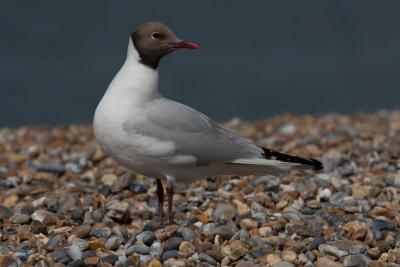Software for the birds
Posted on 20 July 2021
Software for the birds
 Black-headed gull photo by Philipp Boersch-Supan
Black-headed gull photo by Philipp Boersch-Supan
By SSI Fellow Philipp Boersch-Supan.
When you think about ornithology - the study of birds - your mind might wander to khaki-clad field biologists with big binoculars, telescopes, and long-lensed cameras. Or perhaps a ringing station where birds are captured to be banded and measured. Or perhaps the storage rooms of a natural history museum with drawers upon drawers of carefully preserved specimens. Sure enough, ornithology is in action in all of those places, but like most other areas of biology, advancements in technology have left a huge mark on the field in recent years.
Software in ornithology
Field ornithologists and recreational bird watchers are now able to put bird observations into smartphone apps which are directly linked to global biodiversity databases and advances in electronics mean researchers can attach miniature tracking devices to birds to study their movements in great detail.
Advancements like those have provided novel insights into the life of birds and created new research opportunities. For example, big citizen science data are being used to study and predict the abundance and distributions of birds across space and time, and to understand the responses of birds to the changes of weather patterns and resource availability brought on by global climate change.
However, larger volumes of data and the variety of data types also bring new challenges. Traditional workflows for data storage and processing may simply be overwhelmed by large data volumes, and on the analytical side adjustments are necessary to statistical workflows to address new data types and observation methods. As a result software plays an increasingly important role in ornithology.
The statistical programming language R enjoys broad take-up across ornithology and other ecological disciplines. It’s popularity is in part down to the fact that R is a powerful free and open-source software. This reduces financial barriers to conducting science, an important aspect for a discipline that spans the globe and a community of scientists with a multitude of different backgrounds and experiences. Another reason for R’s success is its modular design. There are currently over 17,000 packages available that perform particular computational tasks, and these are developed by and for the user community.
Useful packages
The amount of training in quantitative and computational methods is extremely variable in the career paths that lead to ornithology, so exploring the thousands of packages available for R can be overwhelming. The forthcoming joint virtual meeting of the American and Canadian Ornithological Societies (9-14 August 2021) therefore will offer a lightning talk symposium on 10 August to introduce ornithologists to a range of useful R packages, organised by Steffi LaZerte and generously sponsored by the Sustainable Software Institute. The session will start with an introduction to the R package ecosystem and then feature a series of presentations that each showcase a specific package and its application to avian studies. The packages range from general purpose packages, which simplify the manipulation of tabular and spatial data, to more specialised bird-related packages that for example can handle birdsong recordings, provide access to ornithological databases, or help with the interpretation of tracking data in conservation planning. The symposium will end with an introduction to a new curated package collection for ornithology and a discussion of other packages ornithologists use or would like to see developed.
For more information about the meeting and symposium visit https://meeting.americanornithology.org or get in touch with SSI Fellow Philipp Boersch-Supan.

